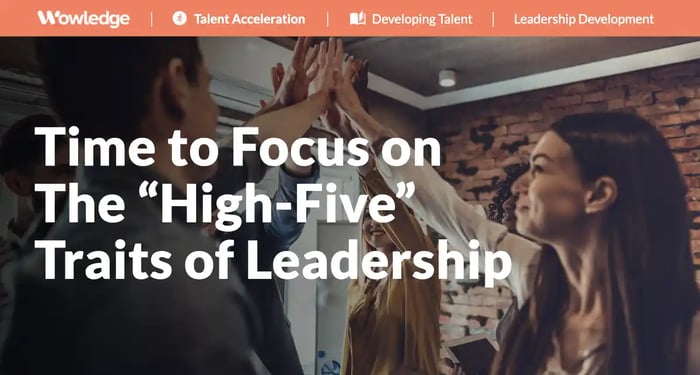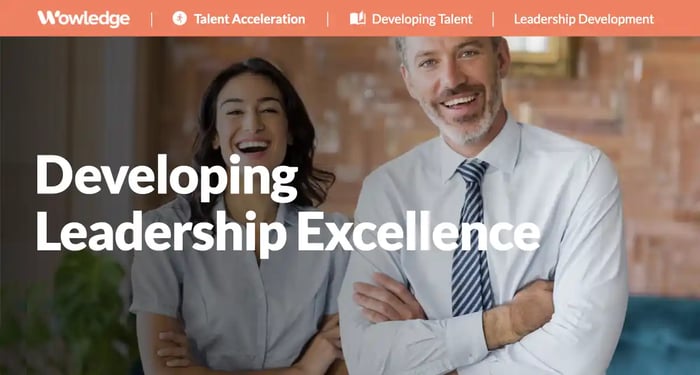Table of Contents
Leaders face unprecedented complexities in the current business environment filled with economic, labor market, and disruptive technological challenges. The issue that leadership is failing to adapt and thrive in a number of ways is looming large. First, executives are spending less time in their seats than ever before. According to a 2020 Report by Korn Ferry, the average tenure of an executive is only 4.9 years, a substantial decrease since 2016. The report also noted that the problem is worsening, with younger executives tending to spend less time in their roles and the youngest of those typically falling into the tech and consumer sectors (where rapid growth and more rapid job changes are taking place). This leads to the second hurdle for leaders: the demand for constant adaptability in an ever-evolving market. For example, Harvard Business Review released a study of the top 20 transformation companies over the last decade that developed new-growth businesses outside their traditional core, which now comprise a significant share of the overall business. Some notable examples include Netflix, Amazon, Microsoft, Ecolab, and Dell. To stay relevant, these companies had to fundamentally change their strategic direction and positioning in the market, conceived and driven by top leadership.
If the above isn’t enough to contend with, Millennials and Gen Z are quickly becoming the dominant generations in the workforce, bringing new demands on leadership and work-life desires than any previous generation. Their preferences and expectations from their leaders include increased transparency, ongoing coaching and feedback, a greater say in how things are done, and a significantly heightened sensitivity to their personal issues and challenges. An article published by Johns Hopkins University emphasizes the scale of the issue for leaders, stating that “Today, a large chunk of the workforce is occupied by Baby Boomers (19%), Generation X (35.5%), and Millennials (39.4%). With over 10,000 Baby Boomers per day reaching the age of 65, in 2030, we’ll see Generation Z constitute about 30% of the workforce.” Couple that with findings from Monster stating that 72% of Millennials value opportunities for career advancement, while less than 2% feel they have an employer or supervisor who encourages their professional growth, and leaders now have a staggering gap to fill. With turnover rates and job movement soaring, it appears that today's leadership is failing to respond to the workforce's demands and expectations.
Addressing the leadership development challenge
It’s no wonder that in this era where the pace of change is accelerating, the task of assembling a successful leadership team has become increasingly challenging and a driver of how leadership is failing to meet the needs of the organizations they guide. What once sufficed for leaders is now insufficient in this dynamic environment. For example, employees often express dissatisfaction with their training for their roles and traditional leadership coaching methods are frequently criticized as ineffective. DDI’s 2023 Global Leadership Forecast found that only 40% of leaders report that their company has high-quality leaders. Another survey found that 75% of employees said their managers were ineffective. Where we see that leadership is failing, how can we adequately prepare the incoming generations and ensure that the current leadership structure embodies enduring qualities that inspire peak performance from employees? Perhaps the answer lies in embracing a concept as simple yet impactful as a “high five”—the Executive High Five. This article will delve into the five critical roles of successful leadership, highlighting exemplary practices and offering insights on effectively fulfilling each role.

The five critical roles of leaders
Number 1: The Coach
“Offers feedback and support to grow the organization’s talent bench while creating a desirable culture.”
The role of a coach is essential in nurturing an organization's talent pool and fostering a positive workplace culture. While executives often seek guidance from their executive coaches for personal growth and support, they sometimes overlook the importance of extending similar qualities to their teams. Exceptional leaders understand that their success is intricately linked to the growth and development of their teams and thus prioritize coaching and mentorship initiatives. In a recent report, one millennial stated, “If we don’t feel valued, then we start to question why we’re doing what we’re doing, and we’ll likely move on. We recognize your time is valuable, so when you dedicate some of it to assessing our work, we know you’re invested.” Coaching can manifest in various forms, including support navigating complex political landscapes, guiding individuals through uncharted challenges, cultivating buy-in and nurturing relationships to garner support for their organization, or offering advice on potential career trajectories and strategic positioning for the future. Through effective coaching, leaders can steer individuals toward realizing their full potential. At the same time, mentorship opportunities allow leaders to impart their wisdom, experiences, and insights, nurturing their mentees' professional and personal growth. A notable example of a leader who exemplifies these skills is Sheryl Sandberg, Meta's former Chief Operating Officer (Facebook). Sandberg is renowned for her dedication to coaching and empowering women in the workplace, as evidenced by her bestselling book "Lean In" and her establishment of LeanIn.Org. This organization supports women in achieving their ambitions. Through her efforts, Sandberg has inspired countless individuals to strive for success and take on leadership roles with confidence and resilience.
Number 2: The Creator
“Provides direction and innovative ideas while setting a vision that is aligned with business strategy and key performance goals.”
The role of a visionary leader is paramount in providing strategic direction and innovative ideas that align with the organization's overarching goals and business strategy. Just as a ship needs a destination, an organization requires a clear vision and mission to steer it toward success and purpose. Strong leaders bear the responsibility of ensuring their team understands the direction of their organization and where their efforts should be focused. In today's fast-paced world, fostering innovation and embracing new ideas is indispensable for staying competitive. This culture of innovation typically begins at the top; if leaders are not receptive to novel concepts, it's unlikely they'll flourish within the organization. Walt Disney stands as a testament to visionary leadership; despite passing away four years before Disney World’s opening, his unwavering vision continues to inspire. During the opening ceremonies, an executive said, “I wish Walt was here to see this,” in which another quickly commented, “He already did.” Effective leaders anticipate industry trends, engage in collaborative vision-setting, and instill a sense of purpose and belonging within their teams. By fostering a culture of innovation and communicating a shared vision, leaders cultivate an environment where every individual's contribution is valued and aligned with the organization's long-term goals, driving sustainable growth and success.
Number 3: The Champion
“Encourage behaviors and programs to execute strategic and organizational objectives.”
The role of a Champion is pivotal in fostering behaviors and initiatives that drive toward strategic and organizational goals. After establishing a vision or direction, the leader must craft a compelling narrative that inspires and unifies their teams. Collaboration along the way often facilitates this process, but at times, directives may originate from farther up the hierarchy. A strong leader ensures that the team is motivated to pursue the strategic vision, embodies the behaviors, and cultivates the culture necessary for its success. Leaders adept in this skill have the ability to rally their teams around the company's mission and values, leading to enhanced fulfillment and success for both individuals and the organization as a whole. Effective motivation entails comprehending the needs and aspirations of team members, acknowledging and rewarding their contributions, and fostering an environment where everyone feels valued and empowered. Satya Nadella, the CEO of Microsoft, stands as a prime example of a leader who embodies this skill. Under Nadella's stewardship, Microsoft has undergone a profound cultural shift driven by a focus on empathy, inclusivity, and empowerment. Nadella's leadership has inspired employees to adopt a growth mindset, encouraging them to embrace risk, learn from setbacks, and innovate boldly, driving their continued success.
Number 4: The Conductor
“Balances competencies, people, costs, and service levels to efficiently fulfill the organization’s core responsibilities.”
Much like a symphony's performance, even a single instrument playing off-tempo or out-of-key can disrupt the entire composition. In this analogy, the role of the conductor is crucial—they oversee each element of the symphony, ensuring that every piece operates at its peak. Just as a conductor oversees the entire orchestra, effective leaders possess the ability to manage resources, streamline processes, and make strategic decisions that propel success and sustain a competitive edge. Leaders optimize productivity, minimize inefficiencies, and meet stakeholder needs by orchestrating competencies, personnel, expenses, and service standards in harmony. Tim Cook, the CEO of Apple Inc., exemplifies mastery in this domain. Cook's tenure has been characterized by a meticulous approach to managing Apple's operations, prioritizing innovation, quality, and customer satisfaction from the outset. In a 2023 interview, Tim Cook shared that within only two years of joining Apple in 1998, he significantly reduced unsold inventory from a month's worth to just two days. Through strategic resource allocation, initiatives for talent development, and cost-effective measures, Cook has ensured Apple's consistent delivery of top-tier products and services while maintaining robust financial performance. His adeptness in balancing these critical elements has played a pivotal role in Apple's sustained success and its global leadership in the technology industry.
Number 5: The Caretaker
“Protects and preserves the critical assets & functional stability of the organization, and accurately reports on metrics and operations to stakeholders, ensuring transparency, accountability, and long-term sustainability.”
The Caretaker plays a vital role in safeguarding the critical assets and ensuring the functional stability of the organization while also providing accurate reporting on metrics and operations to stakeholders, fostering transparency, accountability, and long-term sustainability. Leaders who excel in this capacity can effectively mitigate risks, protect valuable resources, and uphold the integrity of key operations. By implementing robust systems for monitoring and reporting, leaders offer stakeholders timely and precise information, enabling informed decision-making and nurturing trust and confidence in the organization. Mary Barra, the CEO of General Motors (GM), demonstrates mastery in these skills. Barra has prioritized protecting and preserving GM's critical assets, particularly in technology and intellectual property, amidst rapid industry changes and technological advancements. Furthermore, under her leadership, GM has made significant progress in enhancing transparency and accountability by implementing rigorous reporting mechanisms and regularly communicating with stakeholders about the company's performance and strategic direction. Barra's unwavering commitment to safeguarding GM's assets and upholding transparency has been pivotal in fostering stakeholder trust and driving the company's success in a fiercely competitive automotive market.
The five roles encompassed by the Executive High Five—Coach, Creator, Champion, Conductor, and Caretaker—are essential to effective leadership and can guide companies to correct where leadership is failing. However, their importance and emphasis may vary depending on the specific job role, situation, or industry trends. While some roles may require more attention than others at certain times, it's crucial to address all five in some capacity. After all, it's called a high FIVE for a reason, not a high TWO. Whether you're an executive or involved in developing the next generation of leaders, reflecting on how you can enhance your skills in each role is worthwhile.
Interested in delving deeper into the nuances of a seamless Executive Transition into a new role? Consider exploring the comprehensive resources available from Wowledge.
Relevant Practices & Tools
Identifying Critical Needs and Goals for the Role to Establish Immediate Priorities. >
One of the first steps to successfully transitioning into a new role is considering all of the available information on why an executive was hired, some of which will have been discussed... more »
Defining the Highest Strategic Initiatives to Prioritize Areas of Focus. >
It’s important for an executive to get to the initiative level when they start to think about the actions and people required to make traction on a critical need... more »
Building a Culture of Coaching and Mentoring that Creates a Continuous Learning and Improvement Environment. >
Establishing and managing a sustainable culture of coaching and mentoring is an integrated effort that builds an environment where continuous development and growth take center stage... more »
Defining Leadership Competencies that Provide Consistent Benchmarks. >
The initial step is to define what will ultimately be the target for leaders' development. Competencies are clusters of job skills and behaviors that contribute to job success... more »
The Manager Coaching Feedback Survey Tool: Define and Apply Basic Questions for Employees Providing Feedback on Managers' Coaching Prowess. >
This tool functions as a guide to developing questions to assess the extent to which a line manager is providing quality coaching during regular performance check-in or formal discussions... more »
FAQs
How can HR translate the “High-Five” into a usable leadership competency model?
HR teams can map each role—Coach, Creator, Champion, Conductor, Caretaker—into observable behaviors with proficiency levels tied to job tiers. Behavioral indicators should be phrased in plain, evidentiary terms, such as “runs monthly skip-level coaching sessions” or “links quarterly priorities to three-year strategy with success metrics.” Assessment can combine structured 360s, review of work artifacts, and panel interviews with behavior-anchored rating scales. The result becomes a common language for selection, development, and performance decisions.
How can the High-Five be adapted to different business contexts?
In high-growth or venture environments, Creator and Champion typically receive greater weighting, with lighter but explicit Caretaker controls to avoid unmanaged risk. In regulated or asset-intensive industries, Conductor and Caretaker become more heavily weighted, with innovation channeled through curated and reviewed portfolios. Turnaround contexts often start with Conductor for generating delivery discipline and financial improvements, then pivot to Coach and Champion to rebuild the organization’s culture and momentum. Weightings should be codified in role profiles and reviewed quarterly.
How can rewards and performance management reinforce the model without inadvertently creating ineffective incentives?
Goals should balance outcomes and behavior, pairing business results with one or two High-Five behavior commitments that are independently verified. Performance calibration session discussions should require concrete evidence of values- and leadership-competency-aligned behaviors, such as coaching rosters or post-implementation reviews, before awarding top ratings. Variable pay can reserve a portion for team outcomes to discourage the creation of a “hero culture” and reward the Coach and Conductor dimensions. Recognition programs should spotlight sustained adoption, not just launch events.
What diagnostic signs suggest a specific High-Five gap is driving performance issues?
High levels of recurring production rework, missed handoffs, and chronic deadline slips often indicate a Conductor deficiency. Frequent strategy resets with little evidence of execution traction point to an over-indexed Creator without a matching Champion or Conductor capability. Elevated regrettable attrition in pivotal roles suggests a Coach gap, while recurring compliance surprises imply Caretaker weaknesses. Triangulating people data, delivery metrics, and audit results clarifies the dominant gap.










